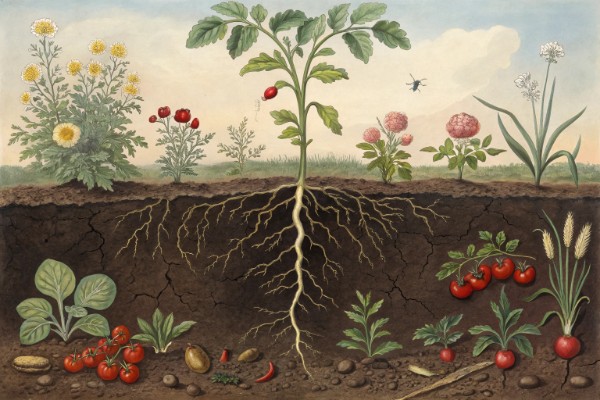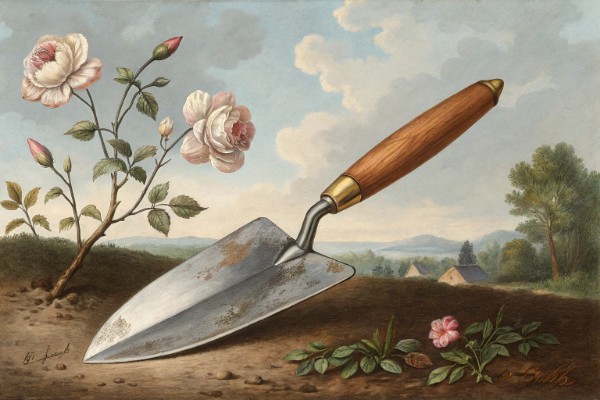Gardening Jobs: Practical Tasks to Elevate Your Outdoor Space

Gardening jobs
Gardening jobs set your garden’s future in motion—start by pruning spent blooms, sowing resilient seeds, and clearing debris to let plants breathe. Tackle seasonal gardening jobs now to encourage healthy roots and fruitful harvests. Each task shapes your outdoor space into a living extension of your taste and energy.
Discover tips, timing, and tools for every month of the year—keep reading to turn chores into rituals and your garden into a masterpiece.
Cheatsheet: Monthly Tasks for a Thriving Garden
🌱 Seasonal Planting
- Spring: Sow cool crops (lettuce, carrots) when soil hits 45°F/7°C. Plant perennials.
- Summer: Sow beans, squash. Deadhead spent blooms. Water daily in heat.
- Autumn: Plant garlic, bulbs. Mulch beds. Harvest root crops.
- Winter: Prune dormant trees. Mulch for frost protection. Plan crop rotations.
🧤 Tools and Products You'll Need
- Bypass pruners
- Trowel
- Spade or fork
- Watering can or hose
- Wheelbarrow
- Mulch
- Compost
- Organic fertilizer
- Seed trays/pots
- Gloves
🌿 Feeding, Weeding, Watering
- Feed every 4–6 weeks with compost or balanced fertilizer.
- Weed weekly to reduce competition—use a hoe after rain.
- Water early morning. 1 inch/25mm per week for most crops.
✂️ Pruning & Deadheading
- Prune fruit trees in winter to boost yield (up to 30% more fruit).
- Deadhead flowers weekly to extend blooming by 60%.
- Cut back herbs regularly to encourage new growth and potent flavor.
🍅 Harvest & Health
- Pick veggies as soon as ripe—vitamin C drops 50% after harvest delay.
- Grow leafy greens for iron, fiber, and antioxidants.
- Preserve surplus by freezing or drying.
🦟 Pest & Disease Checks
- Inspect leaves weekly for pests (look under and over).
- Remove affected plants/parts promptly.
- Encourage ladybugs and lacewings for natural control.
Gardening Jobs: The Art and Science of Tending Land
Rhythms of the Season: Monthly Jobs that Shape a Garden
Every month brings distinct tasks. Late winter demands pruning of apples and pears – their energy spent, old wood surrenders more easily once saps are at their lowest.
March, and seed trays clutter kitchen windows: tomatoes, chillies, cosmos—the stand-bys for spring ritual. Nothing beats the sight of cotyledons flexing under weak spring light, their fierce will to live palpable.
April swells the to-do list: sowing carrots and beetroot, staking sweet peas, tying in climbing roses. A gardener’s calendar never grows empty. The Royal Horticultural Society reminds us, “Timing can mean the difference between bounty and disappointment.”
Perennials versus Annuals: Picking Your Battles
You’ll wage different wars depending on plant choice. Annual bedding devours labor, requiring weekly deadheading and feeding.
Perennials need periodic division, mulching, and cutback. As Margaret Roach puts it, “Maintenance doesn’t mean inertia; it means returning and refining.”
Soil: Where Real Gardening Jobs Start
The hands-down dirtiest job? Soil prep. Well-rotted manure or mushroom compost showers earthworms in a feast, and your plants respond in kind.
Poor soil always tells. Invest your hours double digging and amending and you’ll “grow roots with legs” as my late mentor used to say.
“For every hour spent preparing the soil, you’ll save ten fighting problems later.” – Beth Chatto
The Seasonal Task List: A Gardener’s Calendar
- Spring: Sowing, dividing perennials, pruning, staking, and mulching.
- Summer: Deadheading, pest patrol, cuttings, feeding, harvesting fruit and vegetables.
- Autumn: Lifting tender bulbs, planting spring bulbs, digging over empty beds, composting.
- Winter: Pruning dormant fruit trees, cleaning tools, planning rotations, mulching for frost protection.
Tools That Serve or Sabotage
I’ve shovelled for decades and nothing compares to a sharp spade – stainless steel if you care for your back. A well-balanced secateurs feels like an extension of the hand.
Buy quality where it matters: Felco, Sneeboer, Silky Saws, or Kent & Stowe. Cheap pruners and spades buckle and break, costing more in the end. The Royal Horticultural Society warns, “Poor tools increase accident risk and diminish efficiency.”
Top 5 Commercial Gardening Jobs Worth Your Time
- Garden Designer — Shaping space for beauty and utility. The right design underpins everything; even a tiny courtyard can morph into a personal Eden.
- Horticulturist — Plant science, pest management, plant breeding. Their “plant whisperer” reputation is well-earned.
- Professional Gardener — Estate or public garden maintenance: hedging, mowing, topiary, rare fruiting techniques like espaliering.
- Tree Surgeon (Arborist) — Climbing, rigging, careful chainsaw technique. ISA-certified folks are the real deal.
- Lawn Care Specialist — Soil pH testing, aeration, scarification. Turf is its own science and obsession.
Side Hustles and Alternatives: Supplementing Your Love of Plants
Want more than classic pruning and planting jobs?
- Urban vertical gardening—installing green walls for commercial offices. Companies pay top dollar for air-filtering, mood-lifting foliage.
- Moss art installation—especially in cafés and boutique hotels. Easy maintenance, strong aesthetic punch.
- Restoration gardening—reclaiming old orchards or “rewilding” neglected corners with native species for clients obsessed with biodiversity.
What Skills Stand Out?
The Kew Diploma still opens doors, but hands-on experience matters more. I’ve seen decades-old gardeners outpace horticultural PhDs when identifying fungal rust at twenty paces.
Soft skills count: talking a client out of overcrowding a bed, or coaxing ancient secateurs working again. The most employable gardeners are reliable, curious, and patient.
The Money Question: Earning Potential in Gardening Jobs
Hourly rates vary worldwide. In the U.S., the Bureau of Labor Statistics pegs median pay for groundskeepers at $17.08/hour (2023), but specialists—arborists, designers, consultants—can command double or triple. UK figures from Prospects.ac.uk show £20,000–£32,000/year, with self-employed contractors and designers earning more.
“Gardening employs over 200,000 people in the UK,” according to the Horticultural Trades Association, “outpacing the population of some small cities.”
The Unexpected Perks
Job satisfaction runs high; 82% of gardeners in a 2022 RHS survey reported improved mental health. The tangible rewards—watching seeds transform into abundance—offer a steady antidote to modern ennui.
Once you get hooked, the task list reads less like chores, more like a playlist of small rituals. There’s a reason we trade stories over compost heaps and cold hands.

Want smarter plant choices? 🪴
Frequently Asked Questions About Working in Gardens
What tasks do gardeners tackle in different seasons?
Spring: Prepare soil, plant new specimens, edge beds, and clear debris. Summer: Water, mulch, stake tall plants, and manage weeds. Autumn: Prune perennials, plant bulbs, rake leaves, and compost organic waste. Winter: Protect sensitive plants, clean tools, and plan for future plantings. Each season brings unique duties to keep outdoor spaces thriving.
How do professionals manage pests and diseases safely?
Trained gardeners inspect plants regularly and recognize early signs of trouble. They favor integrated pest management—using companion plants, natural predators, and manual removal before chemical solutions. When applying treatments, they choose options approved for edible gardens and observe safety intervals. Always follow manufacturer’s guidelines for both U.S. and EU standards.
What are the physical requirements for these roles?
Most positions involve prolonged standing, lifting (up to 50 lbs/23 kg), repetitive motion, and working outdoors in variable conditions (32°F/0°C to 95°F/35°C). Workers should wear sturdy gloves, sun protection, and supportive footwear to reduce strain and prevent injury.
How do gardeners adjust plant care for different climates?
They select species suited to USDA Hardiness Zones or EU equivalents, monitor moisture with rain gauges or meters, and adjust fertilizing schedules based on soil tests. Mulch and shade cloths help regulate soil temperature and retain moisture during heatwaves.
Which certifications or training improve prospects in this field?
Completing horticulture courses, apprenticeships, or certifications from organizations like the Royal Horticultural Society (RHS) or the American Society for Horticultural Science can enhance skills and advance careers. Many employers value hands-on experience and ongoing professional development through workshops and seminars.
How do gardeners stay safe while using machinery?
They inspect equipment before use, wear eye and ear protection, and ensure guards are in place. Following manufacturer’s instructions and local regulations minimizes accidents. Regular maintenance also keeps tools and machines in working order.
Gardening jobs aren’t about ticking boxes—they’re about paying attention. Tending soil, pruning branches, or sharpening your pruning shears—each task shapes the garden’s rhythm and health. Observation matters as much as action. Skip the calendar if you must, but don’t skip wandering through your patch, noticing what’s thriving and what’s struggling.
Small, steady gardening jobs—like keeping your watering can handy or your hand trowel clean—keep chaos at bay. Don’t overthink it: tackle what needs doing today, and tomorrow will take care of itself. In the end, a well-tended garden rewards you for showing up, tool in hand, season after season.
The Money Saver's Guide to Gardening Jobs
Smart gardening sheds expense, cultivates abundance, and nourishes both body and bank account. A single packet of heirloom tomato seed ($3) can yield 15 pounds (6.8 kg) of fruit worth $60 at market. Every task in the garden can be tuned for thrift and self-sufficiency without compromise.
Multi-Purpose Tools
- Hori hori knife: Replaces trowel, weeder, and pruner—minimizes tool clutter and spend.
- Quality gloves: Save money on minor injuries, allow you to skip single-use plastic barrier products.
- Rain barrel: Cut irrigation fees—1 inch rainfall on a 1000 sq ft (93m²) roof yields 623 gallons (2360L).
Compost and Soil Health
- Homemade compost reduces waste bills, boosts yields by up to 35%. Even kitchen scraps and shredded leaves suffice.
- Mulch suppresses weeds (reducing time and cost) and retains moisture, lowering water use by 25%.
- Grow nitrogen fixers (clover, peas): Natural fertilization, no chemical inputs required.
Seed Saving and Propagation
- Save open-pollinated seed—one tomato can produce over 50 seeds for next year and share.
- Take softwood cuttings of shrubs and herbs. Home-propagated lavender, rosemary, currant, and fig plants outperform most store-bought starts.
DIY Pest and Disease Management
- Interplant alliums (onion family) to repel carrot fly and aphids, limiting pesticide costs.
- Use netting from secondhand sources instead of sprays. Barriers defend brassicas and berries for years.
- Make garlic-chili spray for under $1, deterring most leaf-eating insects.
Nutrition and Self-Sufficiency
- Year-round salad yield: Sow leafy greens in succession for continuous harvest. One 4x4 ft (1.2x1.2 m) bed yields 150 salads annually.
- Cook from the plot: Home produce contains up to 70% more vitamin C and antioxidants than store-bought equivalents.
Every job completed with thrift in mind returns far more than money—resilience, nutrition, and autonomy take root with each practical choice.
Find out which plants will thrive in your garden!
Answer a few fun questions and get custom plant recommendations perfect for your space. Let’s grow something amazing together!

start your season





